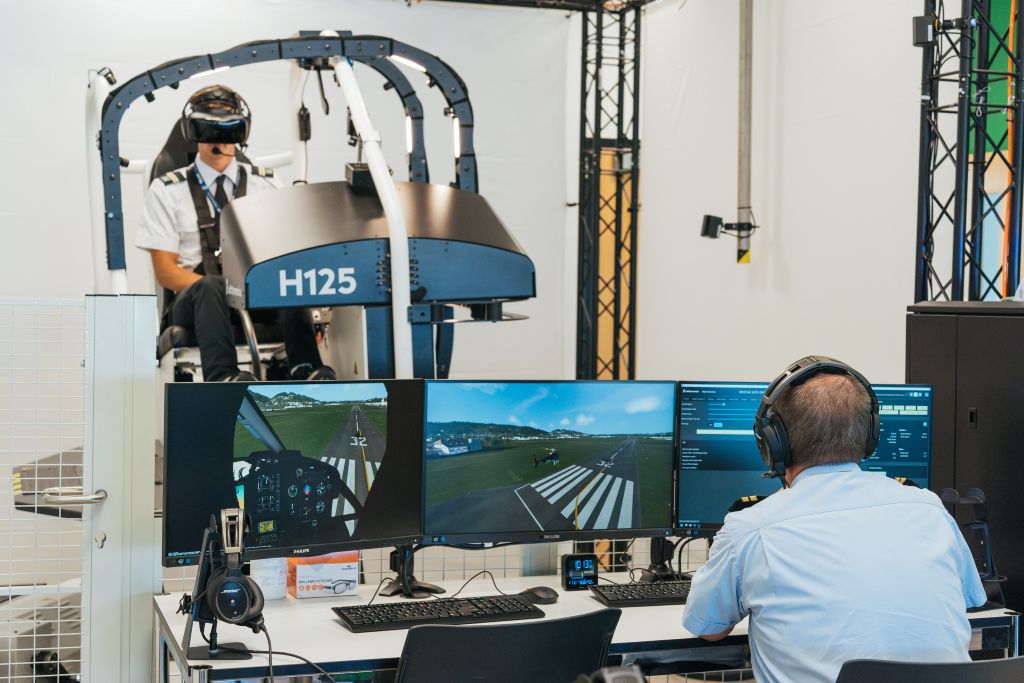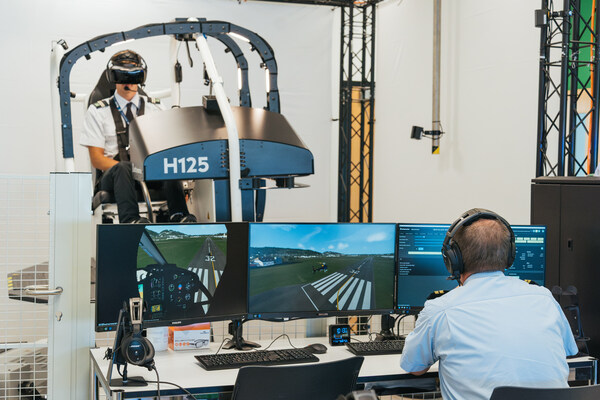Loft Dynamics Becomes World’s First VR Flight Simulation Training Device to Receive FAA Qualification

Loft Dynamics, the global leader in virtual reality (VR) flight simulation training devices (FSTDs), today announced that the Federal Aviation Administration (FAA) has qualified its VR simulator — the first FAA-qualified VR FSTD in the United States. This achievement is a landmark in aviation safety and a pivotal step in bringing advanced flight simulation technology to pilots and operators nationwide amid intensifying demand for pilots. It also cements VR’s increasingly influential role in the future of U.S. pilot training. Outside the U.S., Loft Dynamics is the first and only VR simulator to achieve qualification from the European Union Aviation Safety Agency (EASA).

For the first time, U.S. helicopter pilots can train and receive credit toward pilot ratings on an FAA-approved VR FSTD, provided it is a Loft Dynamics VR FSTD. This qualification allows the simulator to be used not only for training in engine failures, abnormal and emergency procedures, and instrument approaches but also for challenging maneuvers such as sling load operations, pinnacle operations, and more.
The FAA’s rigorous qualification process requires FSTDs to be evaluated in accordance with 14 CFR Part 60 and meet extensive operational requirements. The FAA evaluated Loft Dynamics’ VR simulator using its Airbus-approved H125 VR FSTD at Marshall University. Qualified as a flight training device, Loft Dynamics’ H125 VR simulator features a full-scale virtual replica cockpit, a panoramic 360-degree view, verified flight modeling, and a six-degrees-of-freedom motion platform that accurately simulates flight visuals, movements, and scenarios. These FSTDs are smaller and significantly more cost-effective than traditional simulators. All pilots in the U.S. are required to train regularly in an aircraft or flight simulator, which is why the qualification of Loft Dynamics’ simulator is a crucial step toward helping more operators conduct this training and address the growing pilot shortage, and why regulatory agencies are embracing and mandating the use of the company’s FSTDs.
Last year, the FAA installed Loft Dynamics simulators at its William J. Hughes Technical Center (WHTC) to advance the safety, efficiency, and environmental sustainability goals of its Next Generation Air Transportation System (NextGen). As part of this initiative, the agency uses the simulator to conduct vertical flight safety research, including engaging hundreds of test pilots to fly the simulator.
The FAA’s approval of the first VR simulator shifts pilot training paradigms, expanding access to the most immersive, customizable, and scalable training solutions. This is also a pivotal moment for Loft Dynamics, as the company is already developing electric vertical take-off and landing (eVTOL) and airplane simulators, broadening its industry impact and value.
“The FAA’s and EASA’s unprecedented qualifications of our technology reinforce the safety and fidelity of VR for pilot training,” said Fabi Riesen, founder and CEO of Loft Dynamics. “It provides a tangible path to solving the world’s pilot shortage and cultivating the next generation of high-quality pilots. We’re not paving this path alone; we’re grateful for Airbus Helicopters’ conviction in Loft Dynamics, dedication to achieving FAA qualification, and commitment to making our FSTDs available to the masses. We’re grateful to the FAA for their support and commitment to improving the trajectory of simulation technology and pilot training. This is an important initial step for modernizing pilot training, and it also signifies a broader industry shift toward leveraging our VR technology to address global challenges.”
Loft Dynamics’ recent opening of its North American headquarters in Santa Monica has established a base for its continental expansion, now accelerated by the FAA qualification. The company’s growing market trust is evidenced by its customers and partners, including the Los Angeles Police Department, which uses its H125 VR simulator to train its pilots safely and effectively, and Airbus Helicopters, which co-developed the H125 VR simulator and supported its FAA qualification through sponsorship under their Part 142 Certificate.
Riesen continued, “We spent the past year ensuring our technology meets regulatory requirements and thoughtfully scaling our talent, production, and high-touch customer support for this next chapter. We’re looking forward to continuously innovating and serving the critical needs of the helicopter industry while also bringing our FAA- and EASA-qualified solution to more aircraft markets. As part of this growth, we’re thrilled to welcome two former FAA administrators and aviation veterans, Randy Babbitt and Michael Huerta, to our advisory board to help catalyze our mission.”
The new advisors will be instrumental in the company’s next phase of growth, especially in developing products that meet the needs of the entire aviation ecosystem: pilots, airlines and commercial operators, manufacturers, and regulators.
In addition to his past role as head of the FAA, Babbitt served on the agency’s Management Advisory Council and brings decades of experience as a pilot and former president of the Air Line Pilots Association. Huerta spent many years in FAA leadership, including a five-year term as administrator, and has extensive industry experience as a consultant and board member for Delta Air Lines and Joby Aviation. Babbitt and Huerta are prominent advocates for simulators in improving pilot training and aviation safety.
“Loft Dynamics incorporates actual accident and incident scenarios into training,” said Babbitt. “This accurately recreates flight operations in a fully immersive environment, allowing pilots to encounter emergencies such as autorotation, vortex ring state, and loss of tail rotor effectiveness without placing any lives in danger. I’m honored to join Loft Dynamics and help lead the way to a safer and more sustainable future for aviation.”
“It has never been more vital to expand the pilot training pipeline, and cutting-edge simulators like the ones built by Loft Dynamics will be an essential part of this process,” Huerta said. “This technology has the power to help reverse the pilot shortage, significantly increase pilot proficiency, and prepare the country for advanced air mobility. I look forward to helping Loft Dynamics bring its qualified simulators to an even wider range of applications and pilots.”
“From the beginning of our partnership with Loft Dynamics, we recognized that its simulator would be a game-changer in training, especially in improving flight safety,” said Melchior Kaag, Vice President of Training and Flight Operations at Airbus Helicopters. “Today, this journey takes a new turn. Another major aviation authority places its trust in Loft Dynamics’ VR device as a direct response to industry-wide training needs, a milestone made possible through our partnership with Loft. I believe this achievement ignites passion among future pilots and will help alleviate the pilot shortage for years to come.”
About Loft Dynamics
Loft Dynamics AG is the global leader in qualified virtual reality flight simulation training devices (FSTD). It is the first and only VR FSTD qualified by the FAA and the first and only VR FSTD qualified by EASA. Equipped with a 3D high-resolution panoramic view, dynamic six-degrees-of-freedom motion platform, and full-scale replica cockpit with a unique pose tracking system, our revolutionary VR simulators provide a more immersive, realistic, customizable, and safe training experience. By offering a training solution 10 times smaller and significantly more cost-effective than legacy simulators, we enhance training accessibility and scalability, empowering highly skilled pilots to meet global demand. We serve leading manufacturers, airlines, operators, schools, and organizations worldwide. Headquartered in Santa Monica, California, and Zurich, Switzerland, our team comprises passionate engineers, developers, and aviation experts. Visit www.loftdynamics.com.





